Stamford, CT Pollen and Allergy Report for Summer 2023
Pollen Allergy Trends in Stamford, CT
When is pollen lowest in Stamford, CT?

February
Lowest month total PPM
Avg. PPM
When is pollen highest in Stamford, CT?

April
Highest month total PPM
Avg. PPM
How does pollen in Stamford, CT compare to Connecticut?
Stamford has a higher average PPM than the state of Connecticut.
Stamford yearly avg PPM:
Connecticut yearly avg PPM:
How does pollen in Stamford, CT compare to the USA?
Stamford has a higher average PPM than the USA.
Stamford yearly avg PPM:
USA yearly avg PPM:
Is pollen worse this year in Stamford, CT?
Spring 2023 was worse than spring 2022.
Spring 2023 PPM:
Spring 2022 PPM:
Average PPM in Stamford, CT
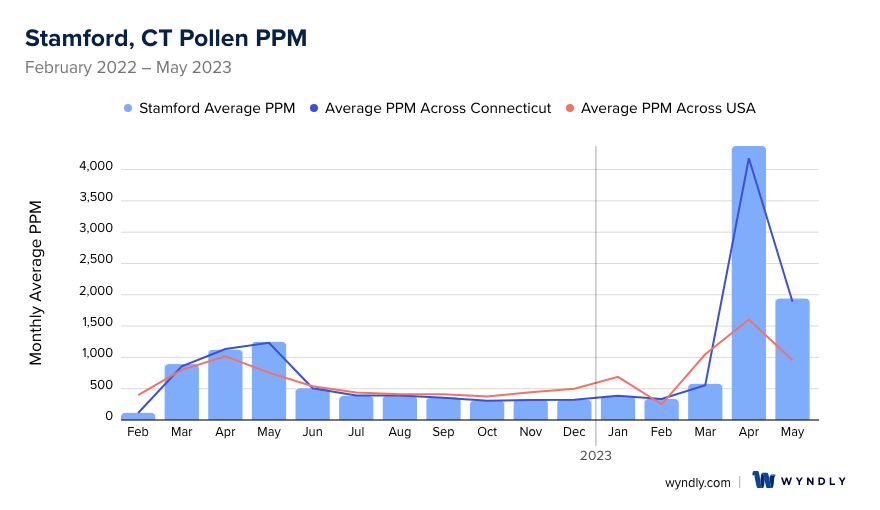

Stamford, CT Pollen and Allergy Breakdown by Month
Grass
When is grass pollen highest in Stamford, CT?
April has the highest grass pollen in Stamford, CT with an average PPM of
When is grass pollen lowest in Stamford, CT?
December has the lowest grass pollen in Stamford, CT with an average PPM of
Tree
When is tree pollen highest in Stamford, CT?
April has the highest tree pollen in Stamford, CT with an average PPM of
When is tree pollen lowest in Stamford, CT?
January has the lowest tree pollen in Stamford, CT with an average PPM of
Weed
When is weed pollen highest in Stamford, CT?
April has the highest weed pollen in Stamford, CT with an average PPM of
When is weed pollen lowest in Stamford, CT?
February has the lowest weed pollen in Stamford, CT with an average PPM of
Stamford, CT Pollen Monthly Breakdown by Pollen Type
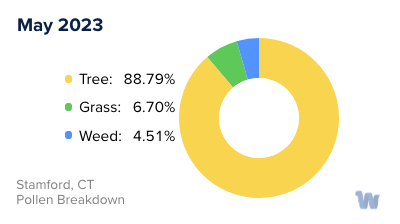
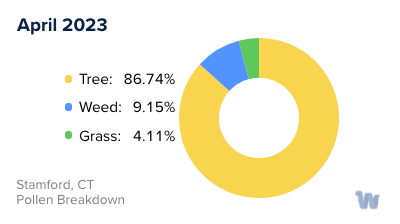

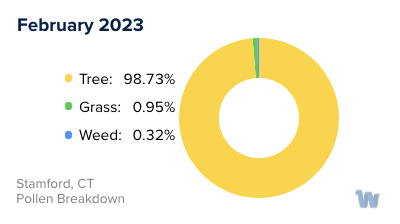
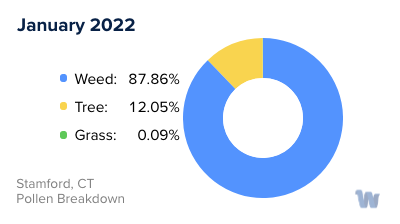





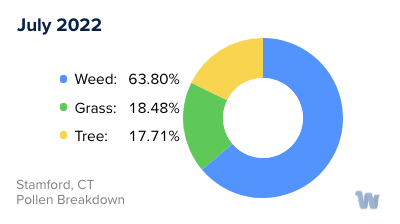
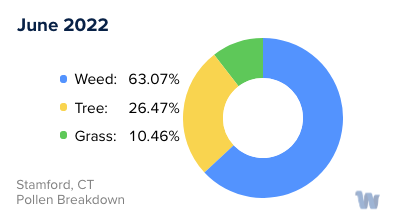
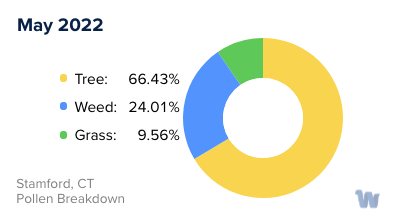


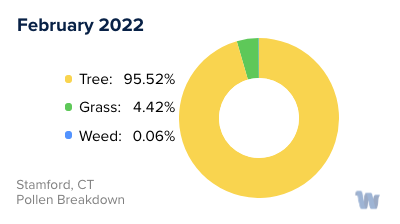
Pollen and Hay Fever in Stamford, CT
Living in the picturesque city of Stamford, Connecticut, can be an incredible experience, but for those with pollen allergies, certain times of the year can be challenging. Pollen allergies, often referred to as hay fever, affect many individuals in Stamford, causing symptoms like sneezing, runny nose, and itchy eyes. However, by understanding the types of pollen and their seasons, individuals can better anticipate and manage their allergies.
The primary sources of pollen in Stamford are trees, grasses, and weeds, each having their distinct peak pollen season.
Tree pollen is typically the first allergen of the year, with levels beginning to rise in late winter and peaking in the spring. Stamford has a broad variety of trees that contribute to the pollen count, including oak, pine, and birch. Each of these trees releases tiny, lightweight pollen grains that can be carried by the wind for miles, inevitably finding their way into the noses and throats of allergy sufferers.
Next comes grass pollen, which usually begins to circulate in late spring and continues into early summer. Common grasses in Stamford, such as Kentucky bluegrass, ryegrass, and fescue, can all cause hay fever. The grass pollen grains are much smaller and lighter than tree pollen, meaning they can be carried even further by the wind.
Lastly, weed pollen tends to peak in late summer and fall. Ragweed is a significant contributor to fall allergies in Stamford, with a single plant capable of producing up to a billion pollen grains in a season. Other weeds like lamb's quarters and plantain can also cause allergies.
The timing and severity of pollen seasons can vary from year to year, based on factors like weather and temperature. However, understanding the pollen calendar in Stamford can help residents anticipate when they might experience symptoms and take proactive steps to manage their allergies. While living with pollen allergies can be challenging, it doesn't have to overshadow the enjoyment of the beautiful seasons Stamford has to offer.


